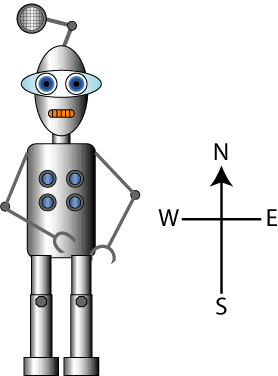Copyright © University of Cambridge. All rights reserved.
'Chippy's Journeys' printed from https://nrich.maths.org/
Show menu
Why do this problem?
This problem will help to reinforce compass directions and to develop familiarity with measurement in metres.
It is an ideal opportunity for learners to use and record the vocabulary of position and direction. It could be a good time to introduce the four compass directions to describe movement about a grid.
When the problem is done on squared paper it is also an excellent opportunity to introduce the idea of scale in its most basic form.
Possible approach
If space allows, you could start by tackling this problem practically with the class working outside or in the hall using a grid drawn on the ground. An $8$ by $8$ grid is required.
Alternatively, you could start using squared paper. This is, in any case, the next stage. You could use this image of the required grid on an interactive white board or simply draw an $8$ by $8$ grid.
After this learners could work in pairs on the actual problem from a computer or this printed sheet so that they are able to talk through their ideas with a partner. (The sheet has the whole problem, without the picture, but with a small grid which could be copied onto
squared paper.) Two larger copies of the grid can be found here.
At the end of the lesson, besides the solutions, the discussion could include reinforcement of any vocabulary used or introduced, and of how the four compass directions can describe the movement about a grid.
Key questions
How about using squared paper to draw out Chippy's route?
What will one square on the paper stand for in metres?
In which direction is North/South/East/West?
Why don't you draw the compass points on your grid?
How far does Chippy go in that direction? So where does he end up?
